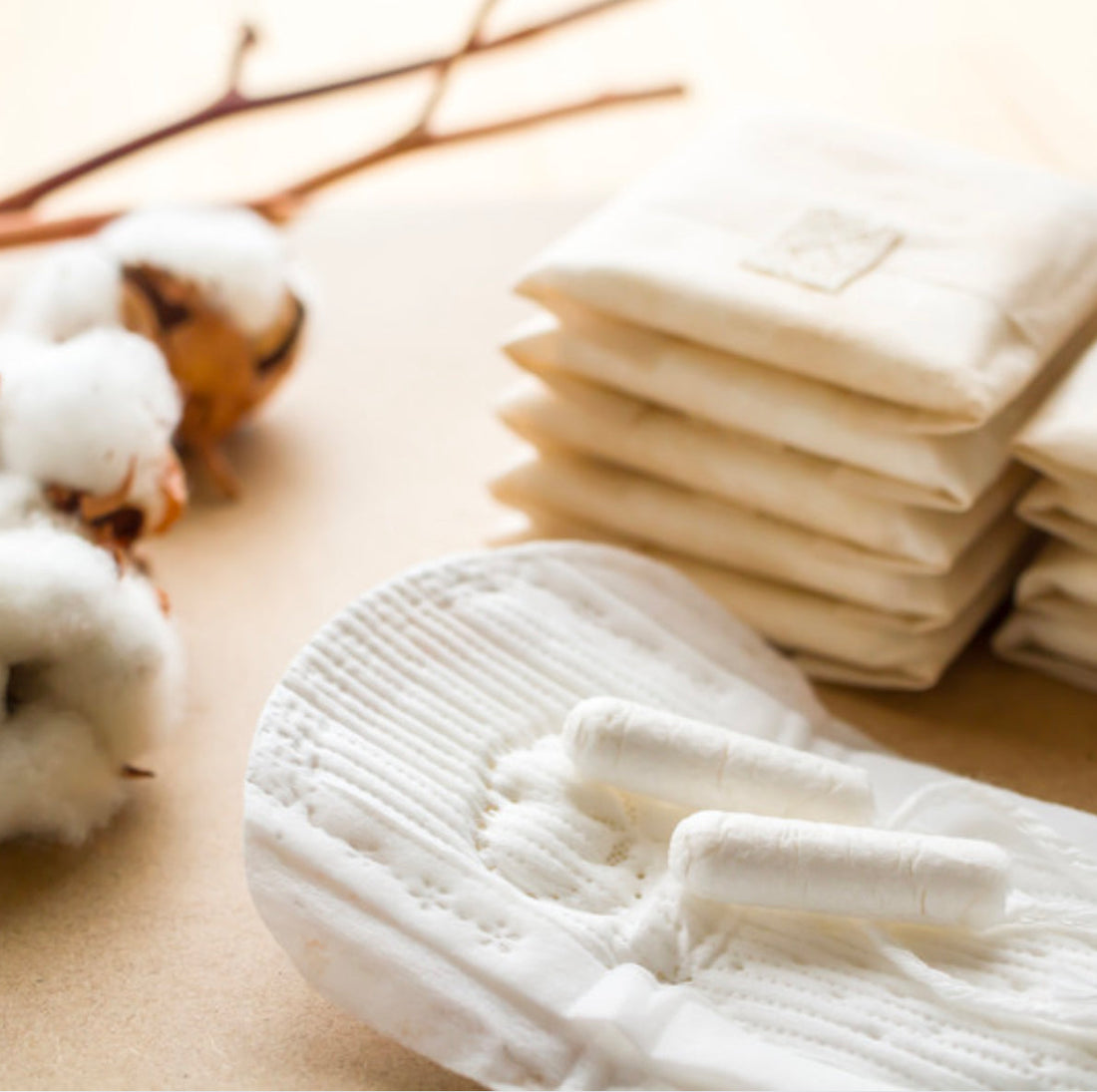
What Can I Use Instead of Pads and Tampons: A guide to a cleaner period.
Share
Due to recent news, many of us are searching for natural alternatives to scent-laden, synthetic menstrual pads and tampons. A few options that can help us through our monthly cycle are 100% cotton pads, cotton tampons, reusable pads, period panties, and menstruation cups. All of these products have different benefits and disadvantages. Let's go through a few.
100% cotton pads and tampons are the most convenient option and the one we are most familiar with. They are easily disposed of, readily accessible in several stores, including Target and most local grocery stores, and have normal sizing options of heavy, light, and regular. The downside to 100% cotton pads and tampons is that they are the more expensive option. Prices range from $7.49 a pack and up, usually over 12 months. Compared to its reusable counterparts, this option will cost the most in the approximate 40 years that women menstruate. They also do not get the best sustainability rate since they are disposable. They require a constant supply of cotton crops and, of course, end up in landfills. Another noteworthy point is that manufacturers may advertise their menstrual products as cotton but conceal that they also contain other synthetic materials. Its worth carefully reading the pack to ensure you get 100% cotton.

100% cotton reusable pads are another great alternative! They are free of synthetic and harmful materials such as polyester and are usually free of toxic dyes. Reusable pads can also come in many sizes and offer different fastening techniques. Some snap, some have straps, while others rely on positioning to keep them in place. Reusable pads are eco-friendly as they can last 3 to 5 years if cared for properly. Prices start at $10.19 a pack today and can range up to more than $100. The downside of these products is the maintenance. Be sure to read the instructions to ensure you know how to properly cleaning them. Most reusable pads must be hand-washed with gentle soap and hung dry. For those who like the idea of reusable pads but don't want to touch soiled pads, I'd suggest using gloves.

Menstruation panties, better known as Period panties, are similar to reusable pads since they are reusable and eco-friendly. They differ because they are made from many materials and have an absorbent layer that catches and contains menstrual blood. The best material for sensitive or intimate areas is 100% cotton however, It's difficult for manufacturers to make 100% cotton period panties since cotton is not very absorbent. The absorbent layer of menstruation panties is usually polyester, a material akin to plastic. The upside is some companies pair 100% cotton panties and reusable pads to create the same effect as period panties without using polyester. Menstruation panties range from $15.99 and up and can last from 6 months to 2 years.

Menstruation cups are cups designed to catch your menstrual flow. They are made from silicon, rubber, or latex. Be sure check the material before purchasing if you are allergic to certain materials. Menstruation cups are another environmentally friendly item lasting 5 to 10 years. The cups also come in multiple sizes to accommodate your menstrual flow. Before using, your hands and the menstruation cup must be washed with scent-free, lightly scented, or vaginally safe soap. The cup is then squeezed into a u shape and inserted into the vaginal canal. Once full, they are removed, emptied, rinsed, and reused. They can be worn up to 12 hours before needing to be emptied, depending on your flow. The downside to the menstruation cup is it can be a little messy when emptied, and you may need an additional storage container to hold them when you are not on your cycle. Prices range from $9.99 a pack and up.

There are many ways to avoid synthetic and often disease-causing menstruation products. Reusable pads, menstruation panties, 100% cotton pads, tampons, and menstruation cups are great and practical alternatives. Now that you know a bit more about the benefits and disadvantages of cleaner and healthier menstruation products, you can work to avoid conventional pads and tampons.
Author: Tiera Curry
Date: Feb. 16, 2025